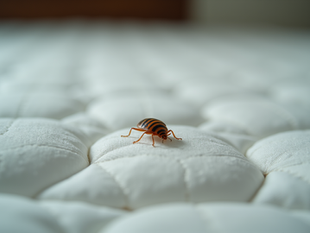
How to Protect Your Hotel from Bed Bugs: A Practical Guide
3
8
0
Bed bugs have become a pressing concern in the hospitality industry, particularly for hotels. These tiny pests can turn a guest’s dream stay into a nightmare, impacting both their experience and your property's reputation. It is essential to safeguard your investment from bed bugs. This guide offers practical steps to help you protect your hotel from infestations.
Understanding Bed Bugs
Bed bugs are small, flat, reddish-brown insects that feed on the blood of humans and animals. They are primarily active at night and can hide in various locations, making them difficult to detect. Guests often notice their presence through bite marks, which can lead to skin irritations, and dark streaks of excrement found on bedding and furniture.
A single female bed bug can lay between 250 to 500 eggs in her lifetime, leading to fast reproduction. This means a minor issue can quickly become a significant infestation if not addressed rapidly. Knowing these facts helps hotels take informed preventive measures.
Prevention Strategies
To safeguard your hotel from bed bugs, having a solid prevention plan is crucial. Here are effective strategies you can employ:
1. Regular Inspections
Routine inspections are critical in preventing bed bug infestations. Set a schedule to inspect all guest rooms, public areas, and employee spaces every month. Focus on hiding spots such as mattress seams, folds of upholstered furniture, and around baseboards.
Training your staff to identify early signs of bed bugs is vital. For example, if a staff member finds dark fecal spots or shed skins during their inspections, they should report it immediately. The quicker you act, the better chance you have of minimizing damage.
2. Create a Bed Bug Management Policy
A clear bed bug management policy helps set guidelines for handling reports of bed bugs. This policy should include:
Staff training procedures on bed bug recognition and reporting.
Step-by-step actions for dealing with infested rooms, including containment measures.
Protocols for informing guests about any issues.
When your staff knows how to handle situations involving bed bugs, you reduce panic and worry among guests, ensuring a smoother resolution process.
3. Implement Preventive Measures
Preventive measures can significantly lower the chances of bed bugs entering your hotel. Consider the following strategies:
Protective Mattress Encasements: Use bed bug-proof mattress encasements on all mattresses and box springs. Studies show that encasements can help reduce detected infestations by as much as 75% within the first year of use.
Furniture Management: Decrease clutter in guest rooms to limit potential hiding spots. Opt for simpler furniture designs that are easier to clean and inspect.
Seal Cracks and Crevices: Regularly inspect and seal any gaps in walls, windows, and floors. This can help reduce potential entry points for these pests.
Responding to Infestations
Even with preventive measures, bed bugs may still find their way into your hotel. Here’s how to respond effectively:
1. Swift Action
When a guest reports bed bugs, take their claim seriously. Investigate the room and adjoining areas right away. Taking immediate action shows your commitment to guest safety and can potentially improve their experience, even in a challenging situation.
2. Remove Infested Items
If an infestation is confirmed, act quickly to remove infested furniture or linens. Ensure discarded items are not accessible for reuse or resale to prevent further spread.
3. Professional Extermination
Hiring professional pest control services is essential for efficient bed bug removal. Professionals can use heat treatments, chemical sprays, or an integrated approach for eradication.
It is crucial to work with a licensed pest control company specializing in bed bug extermination. Their expertise often leads to quicker resolution of infestations, which can save you money in the long term.
Communication is Key
Open communication with your guests can greatly enhance their trust in your hotel. Here's how to ensure effective communication:
1. Inform Guests at Check-in
Upon check-in, inform guests about your hotel's bed bug management policies. Encourage them to report any suspicions immediately. This proactive communication builds trust and shows your commitment to providing a comfortable environment.
2. Provide Educational Resources
Place educational materials in guest rooms detailing what bed bugs look like and how to avoid bringing them home after their stay. Information about identifying early signs can empower guests and reinforce your hotel’s focus on cleanliness.
Maintaining a Secure Environment
Protecting your hotel from bed bugs is vital for maintaining your property’s reputation and ensuring guest satisfaction. By conducting regular inspections, forming a solid management policy, and fostering open communication, you create a safe and welcoming atmosphere.
While it may be impossible to eliminate all risks, the steps outlined in this guide will significantly decrease the likelihood of a bed bug infestation. Staying vigilant and proactive will help protect your investment and keep your hotel a preferred destination for travelers.
By embracing effective prevention and response tactics, you can turn your hotel into a stronghold against bed bugs, ensuring pleasant experiences for all guests and safeguarding your bottom line.






